Numerical Simulation Study on the Response of Ship Engine Room Structure Under Fire Based on Thermo-Mechanical Coupling Model
Abstract
:1. Introduction
1.1. Application of Research Methods in Thermo-Mechanical Coupling
1.2. Application of Research Tools
2. Materials and Methods
2.1. Theoretical Basis
2.2. Numerical Simulation Methods
2.3. Validation of Fire Simulation
2.4. Thermo-Mechanical Coupling Simulation of Real Ship
2.4.1. Ship and Fire Parameters
2.4.2. PyroSim Simulation Parameters
2.4.3. ANSYS Simulation Parameters
3. Results
3.1. Engine Room Combustion Simulation Analysis
3.1.1. Spatial Heat Transfer Law
3.1.2. Overall Temperature Distribution Law
3.2. Analysis of Structural Response Results
3.2.1. Temperature Field of Cabin Structure
3.2.2. Stress Allocation Pattern in the Engine Room
4. Discussion
5. Conclusions
Author Contributions
Funding
Institutional Review Board Statement
Informed Consent Statement
Data Availability Statement
Conflicts of Interest
References
- Wu, B.; Zong, L.; Yip, T.L.; Wang, Y. A probabilistic model for fatality estimation of ship fire accidents. Ocean. Eng. 2018, 170, 266–275. [Google Scholar] [CrossRef]
- International Maritime Organization (IMO). Global Integrated Shipping Information System (GISIS); International Maritime Organization: London, UK, 2019. [Google Scholar]
- Ozkok, M. Risk assessment in ship hull structure production using FMEA. J. Mar. Sci. Technol. 2014, 22, 8. [Google Scholar] [CrossRef]
- Liou, C.; Chu, C.-W. A system simulation model for a training ship evacuation plan. J. Mar. Sci. Technol. 2016, 24, 5. [Google Scholar] [CrossRef]
- Bellas, R.; Gómez, M.A.; González-Gil, A.; Porteiro, J.; Míguez, J.L. Assessment of the Fire Dynamics Simulator for Modeling Fire Suppression in Engine Rooms of Ships with Low-Pressure Water Mist. Fire Technol. 2020, 56, 1315–1352. [Google Scholar] [CrossRef]
- Wang, L.; Wang, J.; Shi, M.; Fu, S.; Zhu, M. Critical risk factors in ship fire accidents. Marit. Policy Manag. 2021, 48, 895–913. [Google Scholar] [CrossRef]
- Li, C.; Mao, J.; Kang, Z.; Zhao, S.; Ren, H. Influence of Firefighting Intervention on Fire Spread Characteristics in Ship Engine Room. J. Mar. Sci. Eng. 2023, 11, 877. [Google Scholar] [CrossRef]
- Bisby, L.; Gales, J.; Maluk, C. A contemporary review of large-scale non-standard structural fire testing. Fire Sci. Rev. 2013, 2, 1–27. [Google Scholar] [CrossRef]
- Zhang, C.; Gross, J.L.; McAllister, T.P. Lateral torsional buckling of steel W-beams subjected to localized fires. J. Constr. Steel Res. 2013, 88, 330–338. [Google Scholar] [CrossRef]
- Zhang, C.; Li, G.-Q.; Usmani, A. Simulating the behavior of restrained steel beams to flame impingement from localized-fires. J. Constr. Steel Res. 2013, 83, 156–165. [Google Scholar] [CrossRef]
- Zhu, J.; Zhang, J.; Wang, Y.; Ge, Y.; Zhang, Z.; Zhang, S. Fire Detection in Ship Engine Rooms Based on Deep Learning. Sensors 2023, 23, 6552. [Google Scholar] [CrossRef]
- Xie, T.-H.; Lin, Y.; Chi, W.; Yang, Z.-Y. Intelligent identification of fires in ship compartments using a Bayesian network. J. Mar. Sci. Technol. 2016, 24, 18. [Google Scholar] [CrossRef]
- Ye, Z.; Hsu, S.-C. Predicting real-time deformation of structure in fire using machine learning with CFD and FEM. Autom. Constr. 2022, 143, 104574. [Google Scholar] [CrossRef]
- Gravit, M.; Shabunina, D. Numerical and Experimental Analysis of Fire Resistance for Steel Structures of Ships and Offshore Platforms. Fire 2022, 5, 9. [Google Scholar] [CrossRef]
- Su, S.; Wang, L. Three dimensional reconstruction of the fire in a ship engine room with multilayer structures. Ocean. Eng. 2013, 70, 201–207. [Google Scholar] [CrossRef]
- McGrattan, K.; Hostikka, S.; McDermott, R.; Floyd, J.; Weinschenk, C.; Overholt, K. Fire dynamics simulator user’s guide. NIST Spec. Publ. 2013, 1019, 1–339. [Google Scholar]
- Salmani, A.; Hosseini, S.F.; Khani, H. Modelling heat transfer and fluid flow in a ship engine room using CFD analysis to evaluate and improve ventilation. Proc. Inst. Mech. Eng. Part M J. Eng. Marit. Environ. 2023, 237, 420–435. [Google Scholar] [CrossRef]
- Prasad, K.; Baum, H.R. Coupled fire dynamics and thermal response of complex building structures. Proc. Combust. Inst. 2005, 30, 2255–2262. [Google Scholar] [CrossRef]
- Chen, L.; Luo, C.; Lua, J. FDS and Abaqus coupling toolkit for fire simulation and thermal and mass flow prediction. Fire Saf. Sci. 2011, 10, 1465–1477. [Google Scholar] [CrossRef]
- Banerjee, D.K. A software independent tool for mapping thermal results to structural model. Fire Saf. J. 2014, 68, 1–15. [Google Scholar] [CrossRef]
- Luecke, W.; Banovic, S.W.; Mccolskey, J.D. High-Temperature Tensile Constitutive Data and Models for Structural Steels in Fire; NIST Technical Note 1714; National Institute of Standards and Technology (NIST): Gaithersburg, MD, USA, 2011. [Google Scholar]
- Alos-Moya, J.; Paya-Zaforteza, I.; Garlock, M.E.M.; Loma-Ossorio, E.; Schiffner, D.; Hospitaler, A. Analysis of a bridge failure due to fire using computational fluid dynamics and finite element models. Eng. Struct. 2014, 68, 96–110. [Google Scholar] [CrossRef]
- Baalisampang, T.; Saliba, E.; Salehi, F.; Garaniya, V.; Chen, L. Optimisation of smoke extraction system in fire scenarios using CFD modelling. Process Saf. Environ. Prot. 2021, 149, 508–517. [Google Scholar] [CrossRef]
- Jiang, Q.; Yuan, W. Numerical simulation of cruise ship cabin fire based on FDS. In Proceedings of the International Symposium on Artificial Intelligence and Robotics 2021, Fukuoka, Japan, 28 October 2021; Volume 11884. [Google Scholar]
- Wang, L.; Gao, J.; Bai, Y. Introduction and Application of Fire Dynamic Simulation Software FDS. In Proceedings of the 17th Annual Conference of Beijing Dynamic Society, Beijing, China, 25–27 February 2011. [Google Scholar]
- Chimakurthi, S.K.; Reuss, S.; Tooley, M.; Scampoli, S. ANSYS Workbench System Coupling: A state-of-the-art computational framework for analyzing multiphysics problems. Eng. Comput. 2018, 34, 385–411. [Google Scholar] [CrossRef]
- Utiskul, Y.; Quintiere, J.G.; Rangwala, A.S.; Ringwelski, B.A.; Wakatsuki, K.; Naruse, T. Compartment Fire Phenomena under Limited Ventilation. Fire Saf. J. 2005, 40, 367–390. [Google Scholar] [CrossRef]
- Beg, D.; Kuhlmann, U.; Davaine, L.; Braun, B. Design of plated Structures: Eurocode 3: Design of Steel Structures, Part 1–5: Design of Plated Structures; John Wiley & Sons: Hoboken, NJ, USA, 2012. [Google Scholar]
- Yang, B.; Wang, D. Dynamic Ultimate Hull Girder Strength Analysis on a Container Ship under Impact Bending Moments. Int. J. Offshore Polar Eng. 2018, 28, 105–111. [Google Scholar] [CrossRef]
- Wang, J.; Cui, X.; Zhang, R.; Xie, Q.; Zhang, S.; Shi, L. Study on the Mass Loss Rate of Liquid Pool Fire in a Well-Confined Ship Cabin. Int. J. Therm. Sci. 2021, 166, 106984. [Google Scholar] [CrossRef]
- Hostikka, S.; Keski-Rahkonen, O. Probabilistic Simulation of Fire Scenarios. Nucl. Eng. Des. 2003, 224, 301–311. [Google Scholar] [CrossRef]
- Chen, X.; Liu, Y. Finite Element Modeling and Simulation with ANSYS Workbench; CRC Press: Boca Raton, FL, USA, 2018. [Google Scholar]
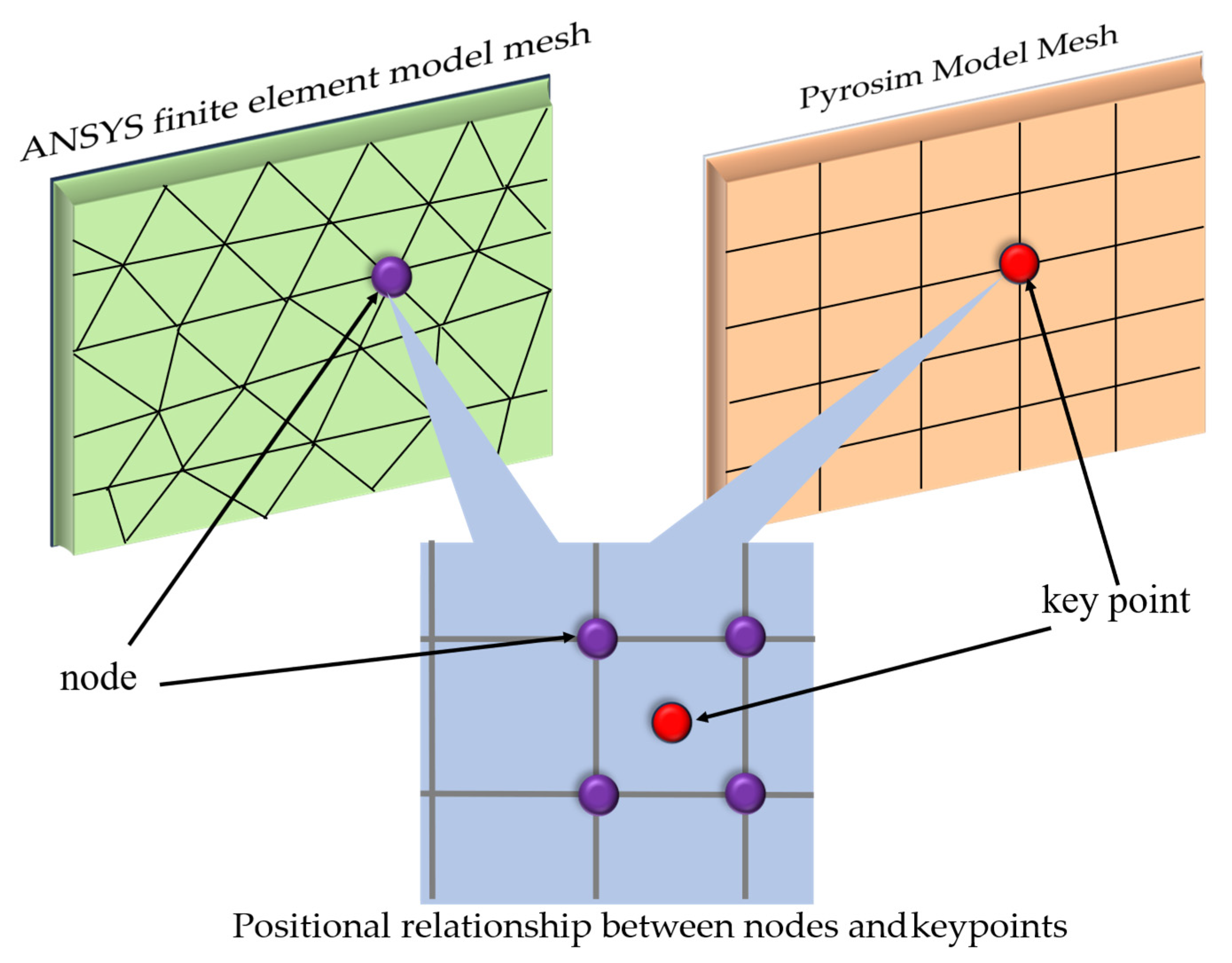

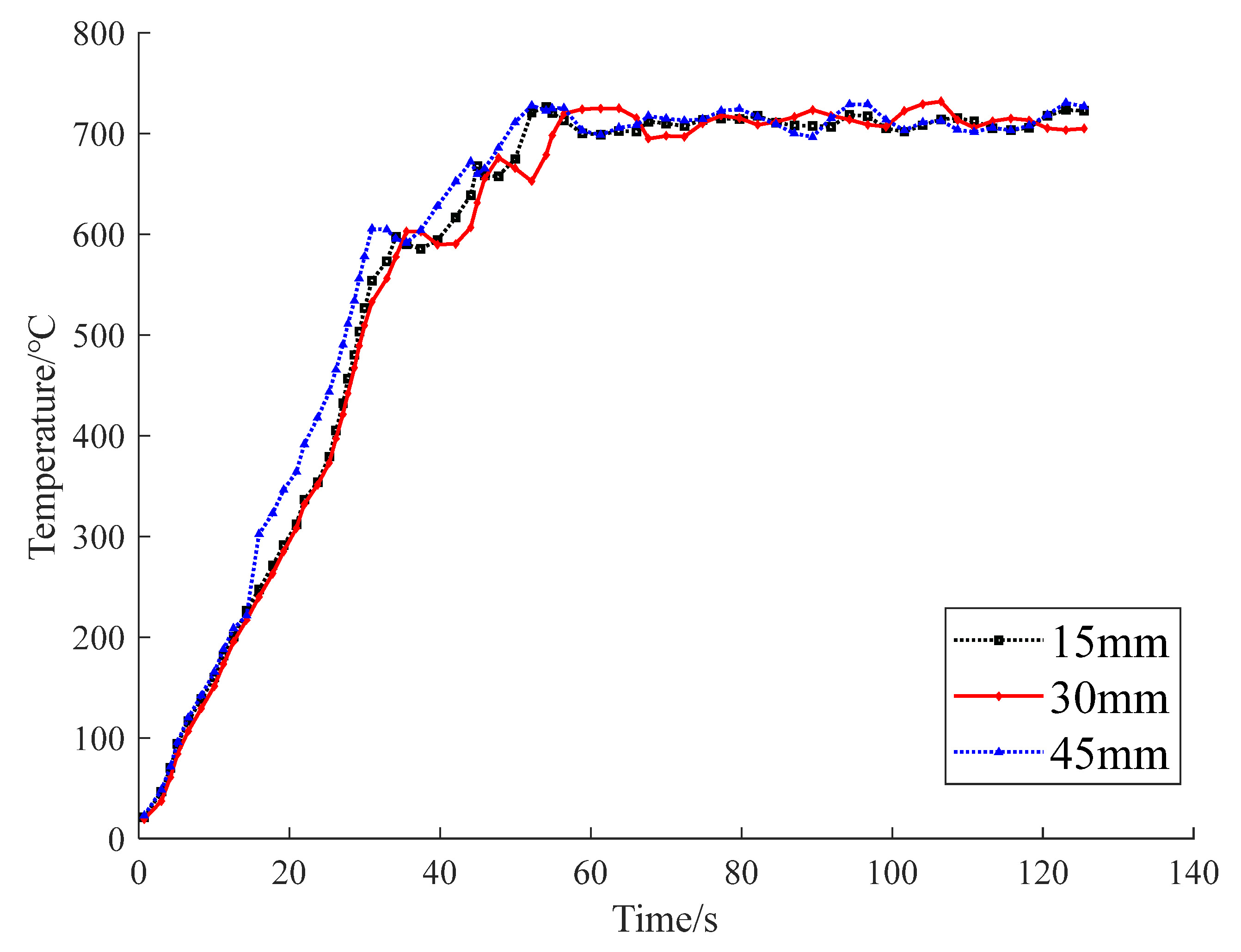
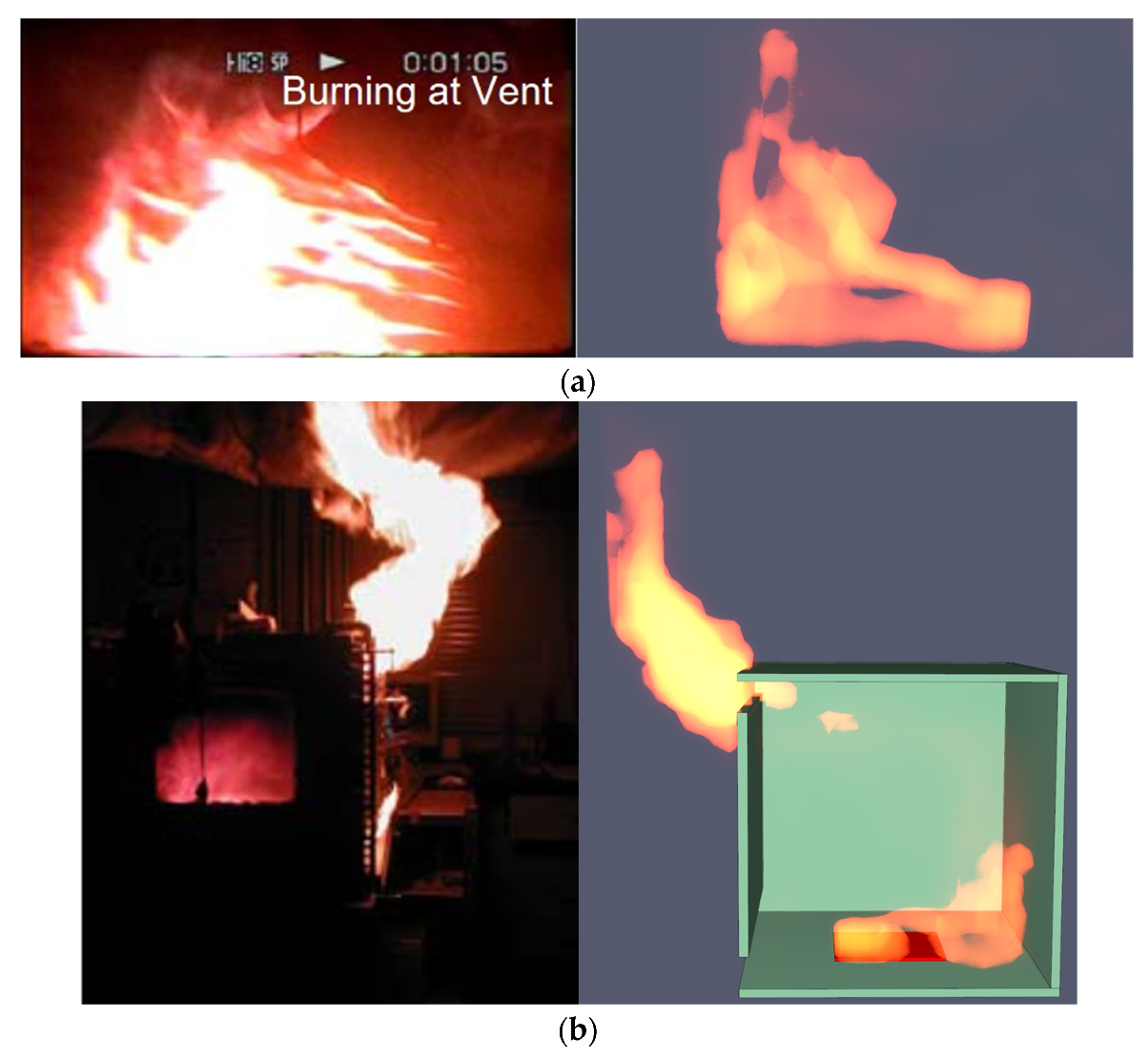
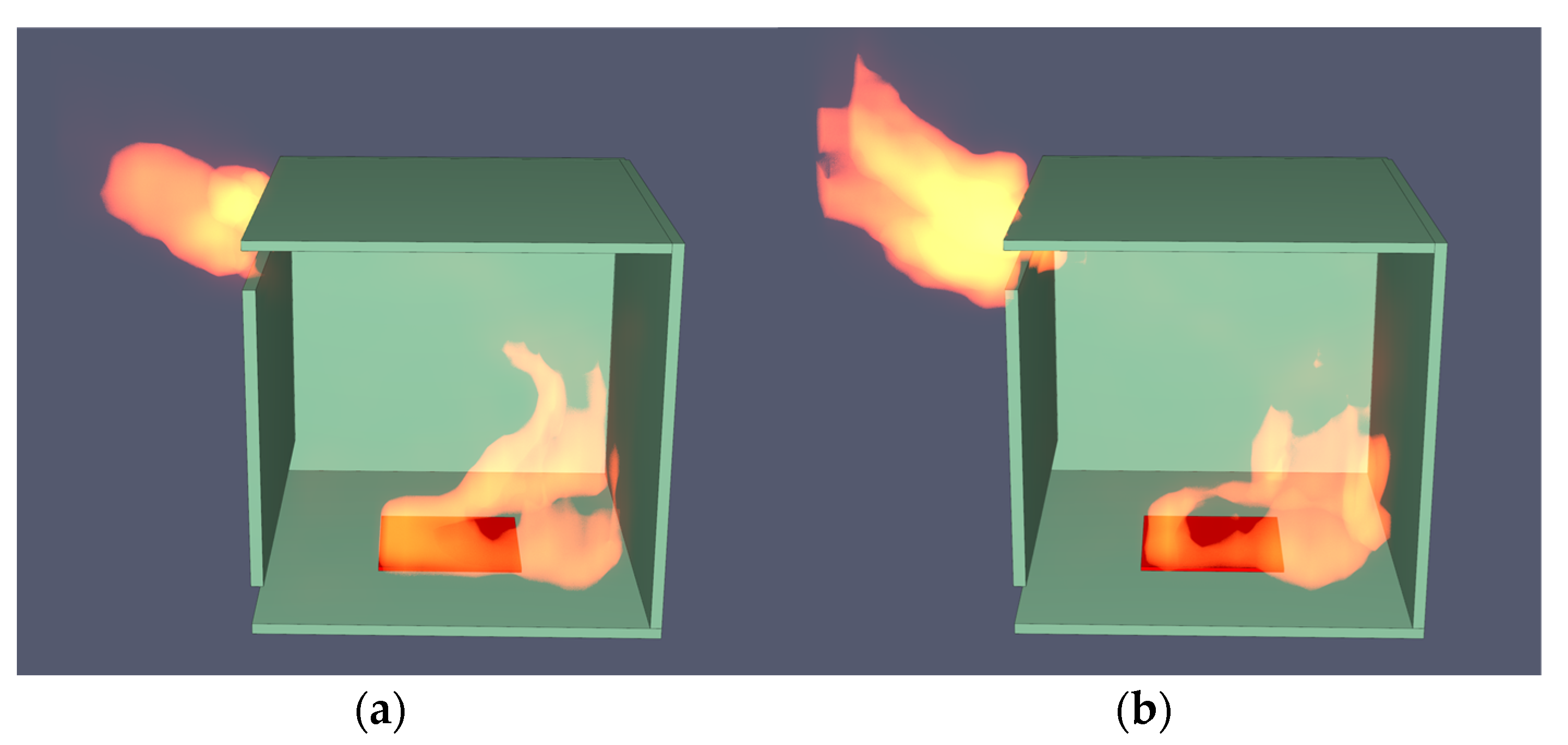


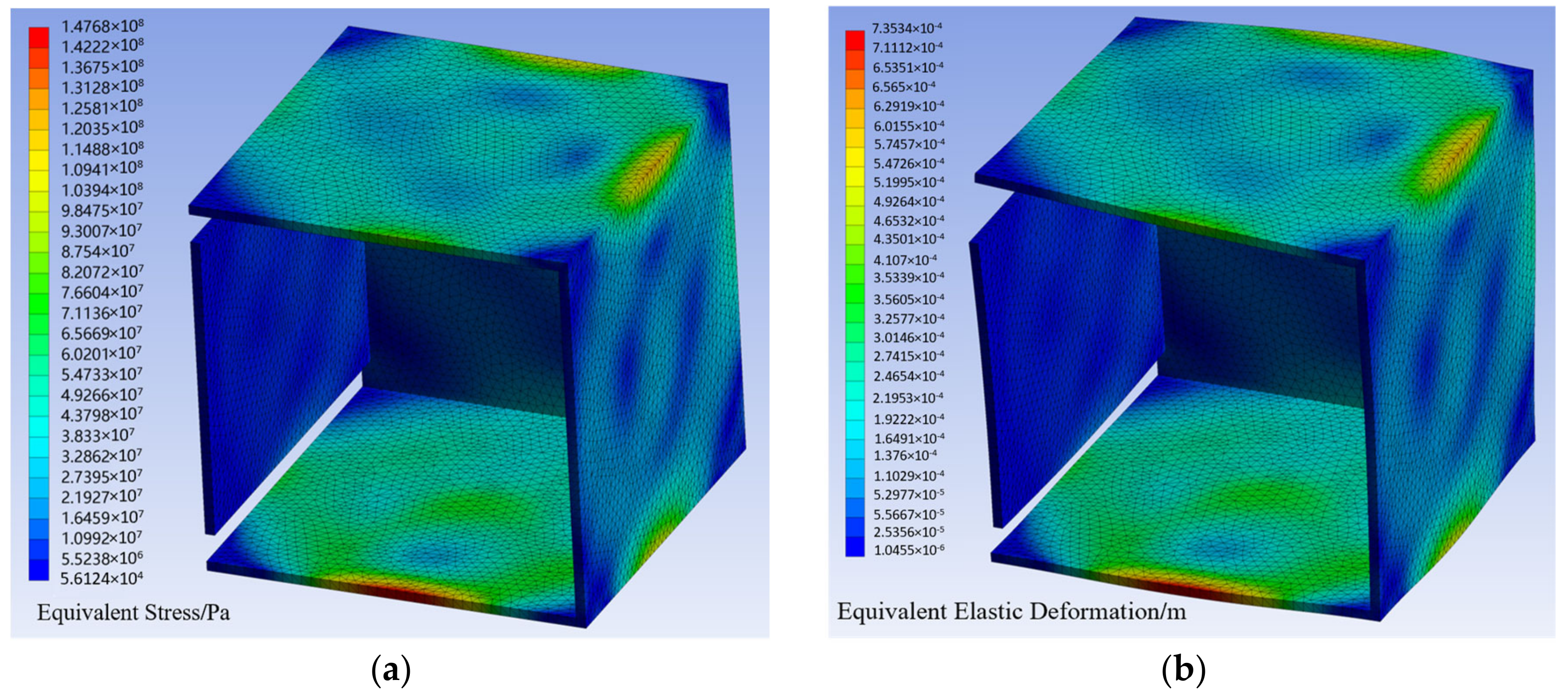
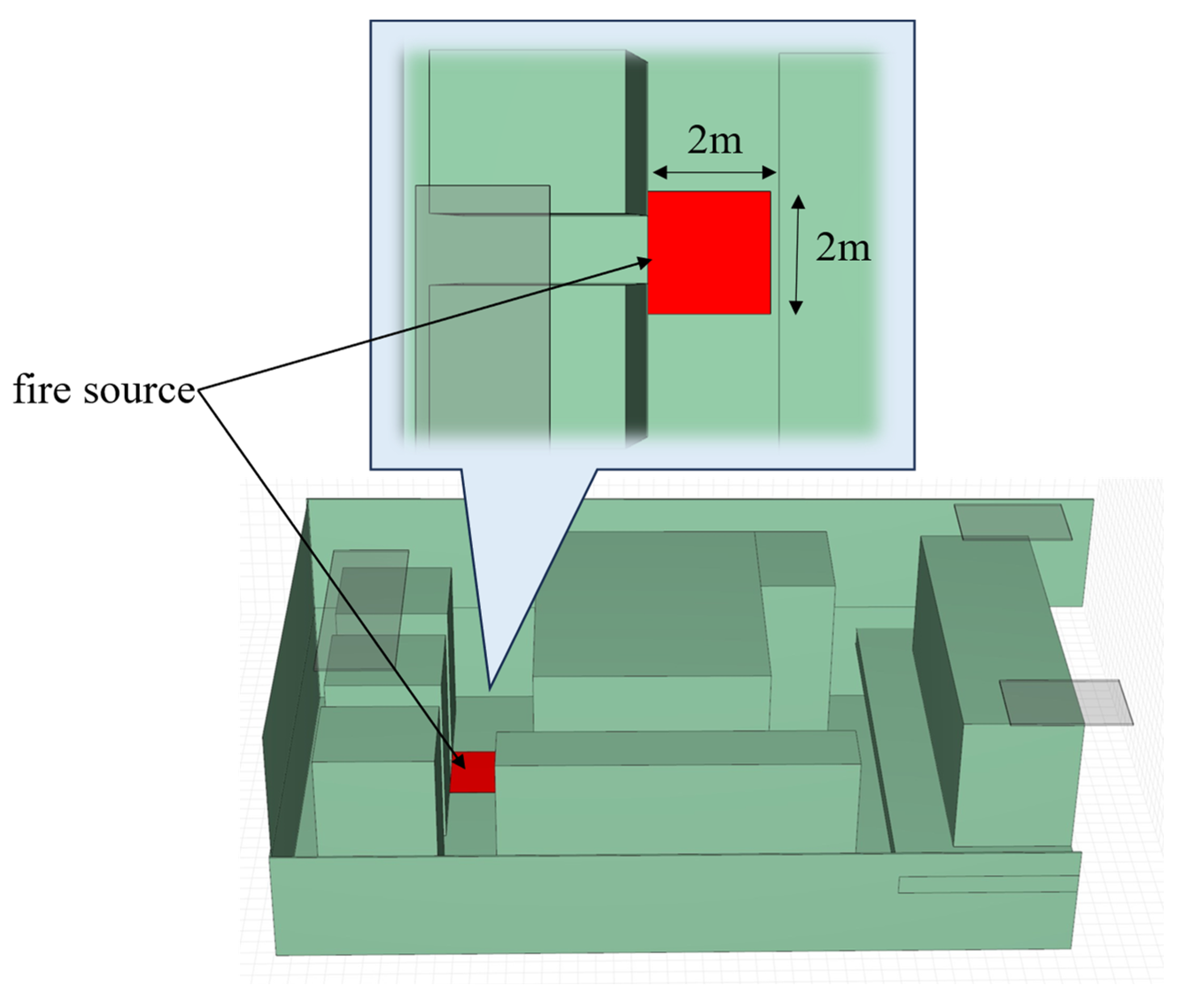
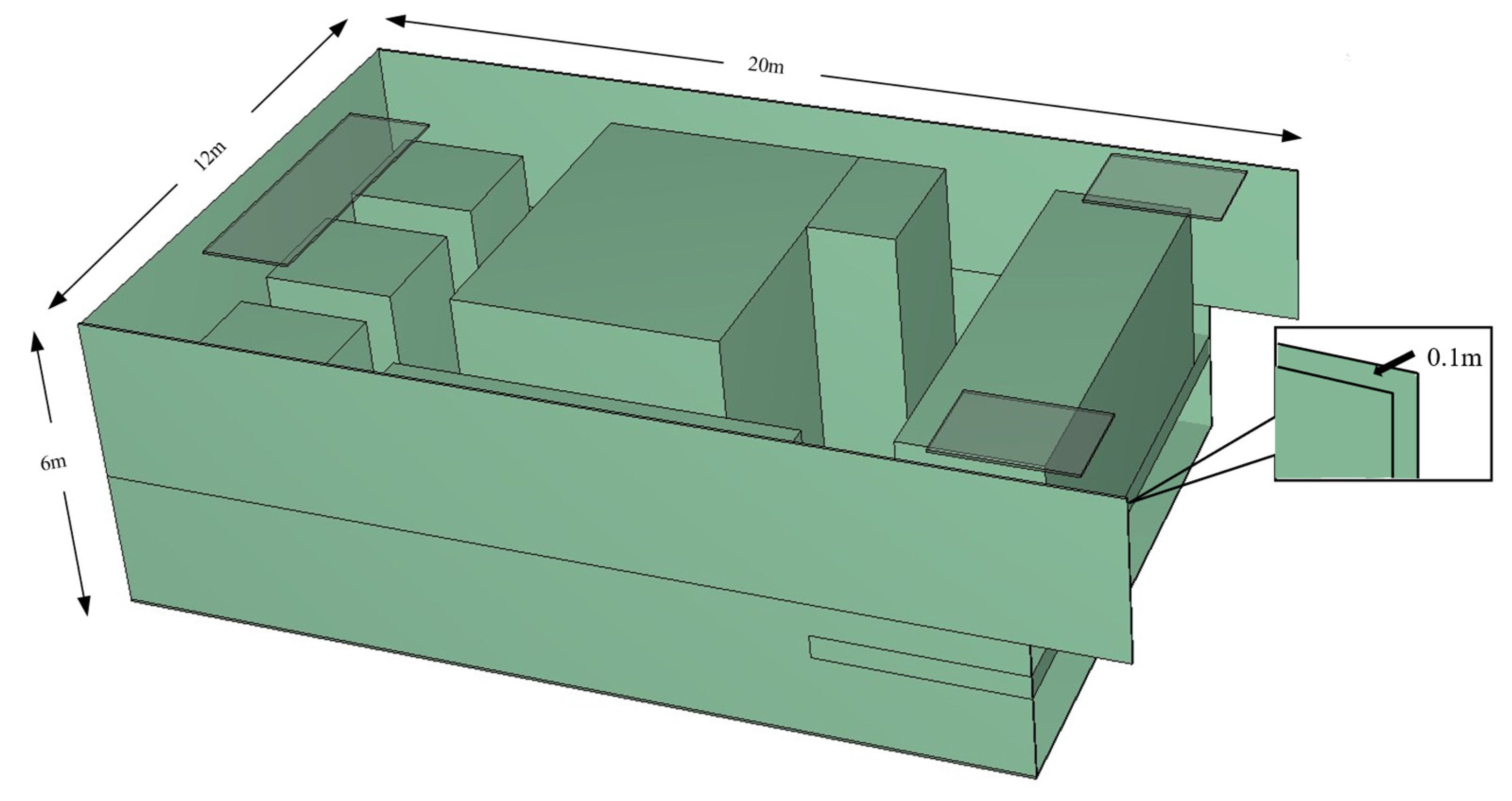


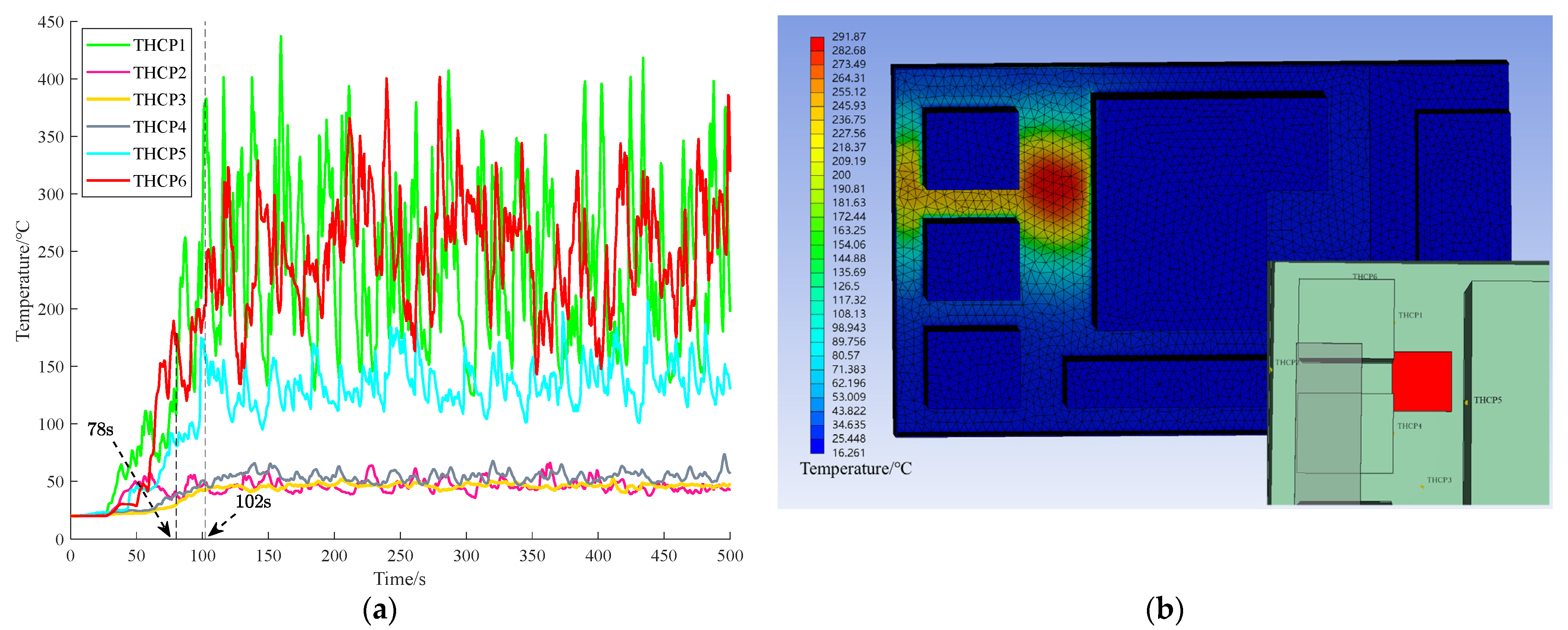
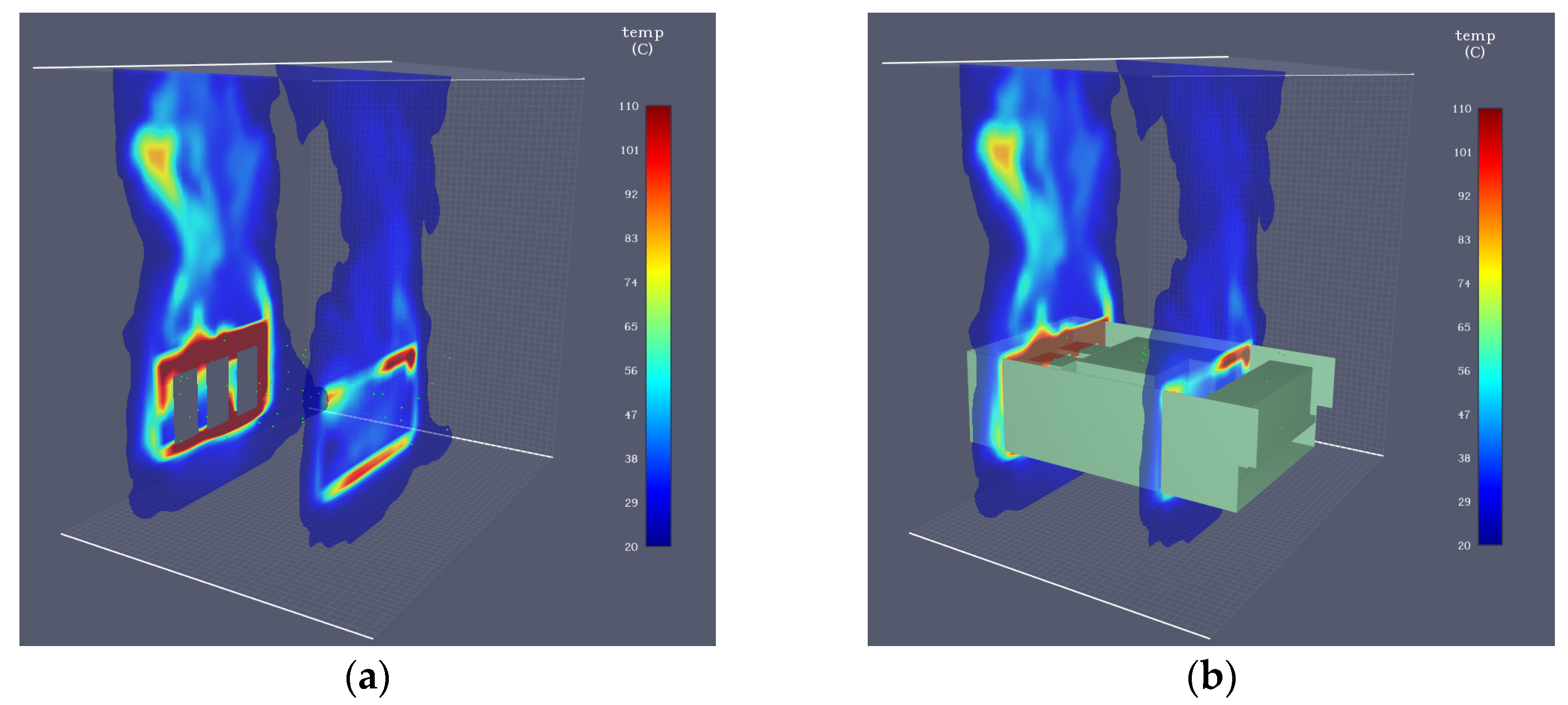

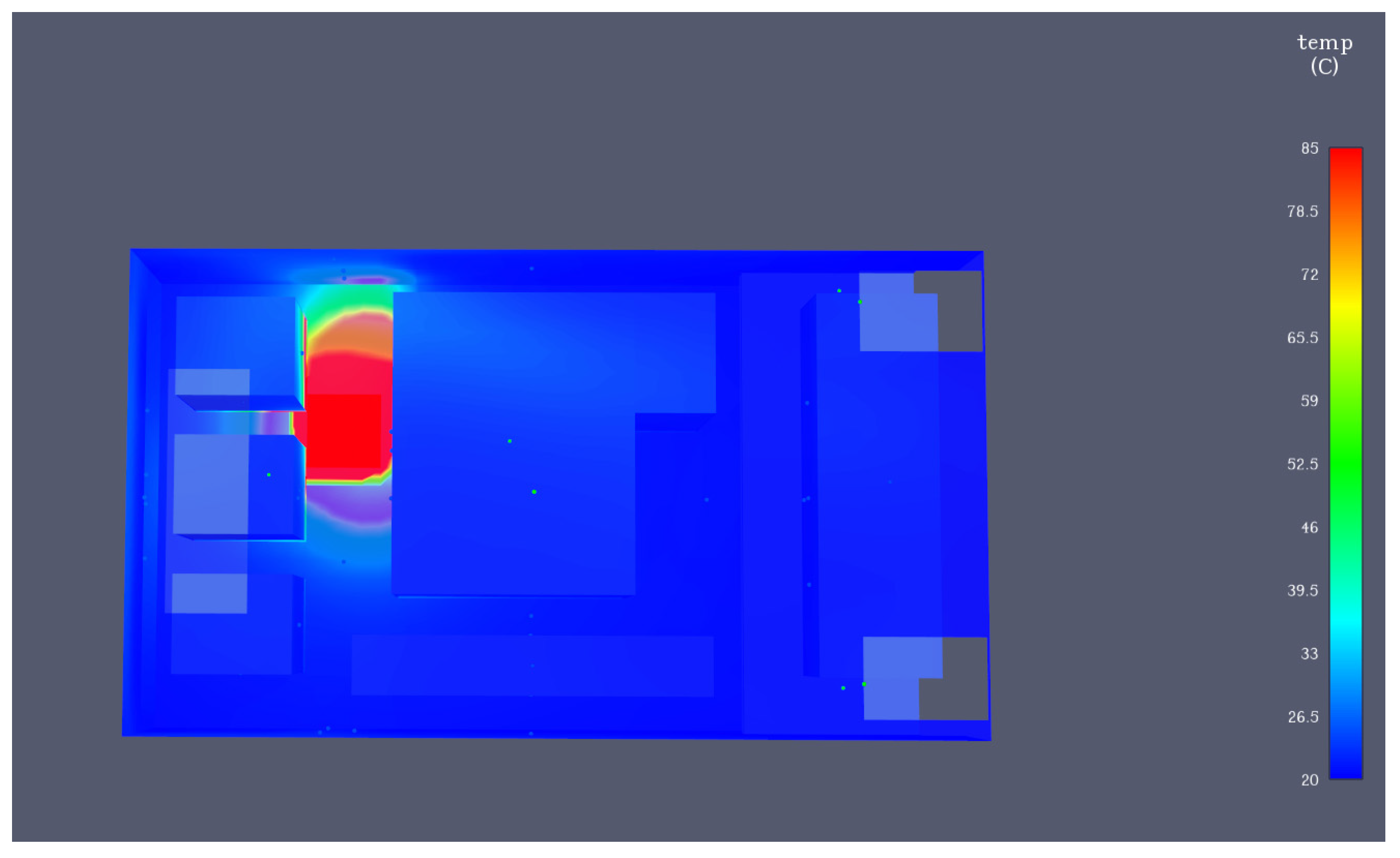
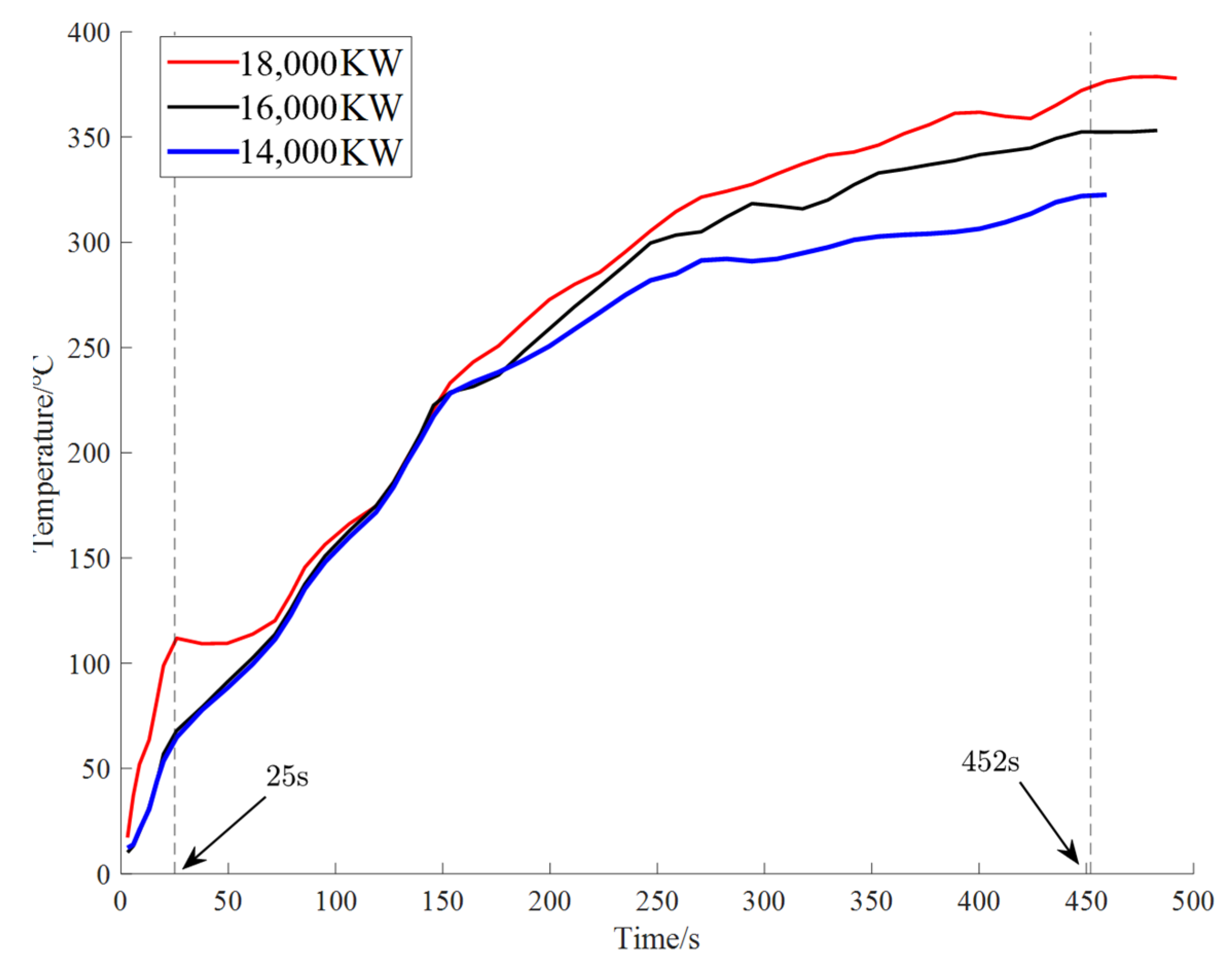
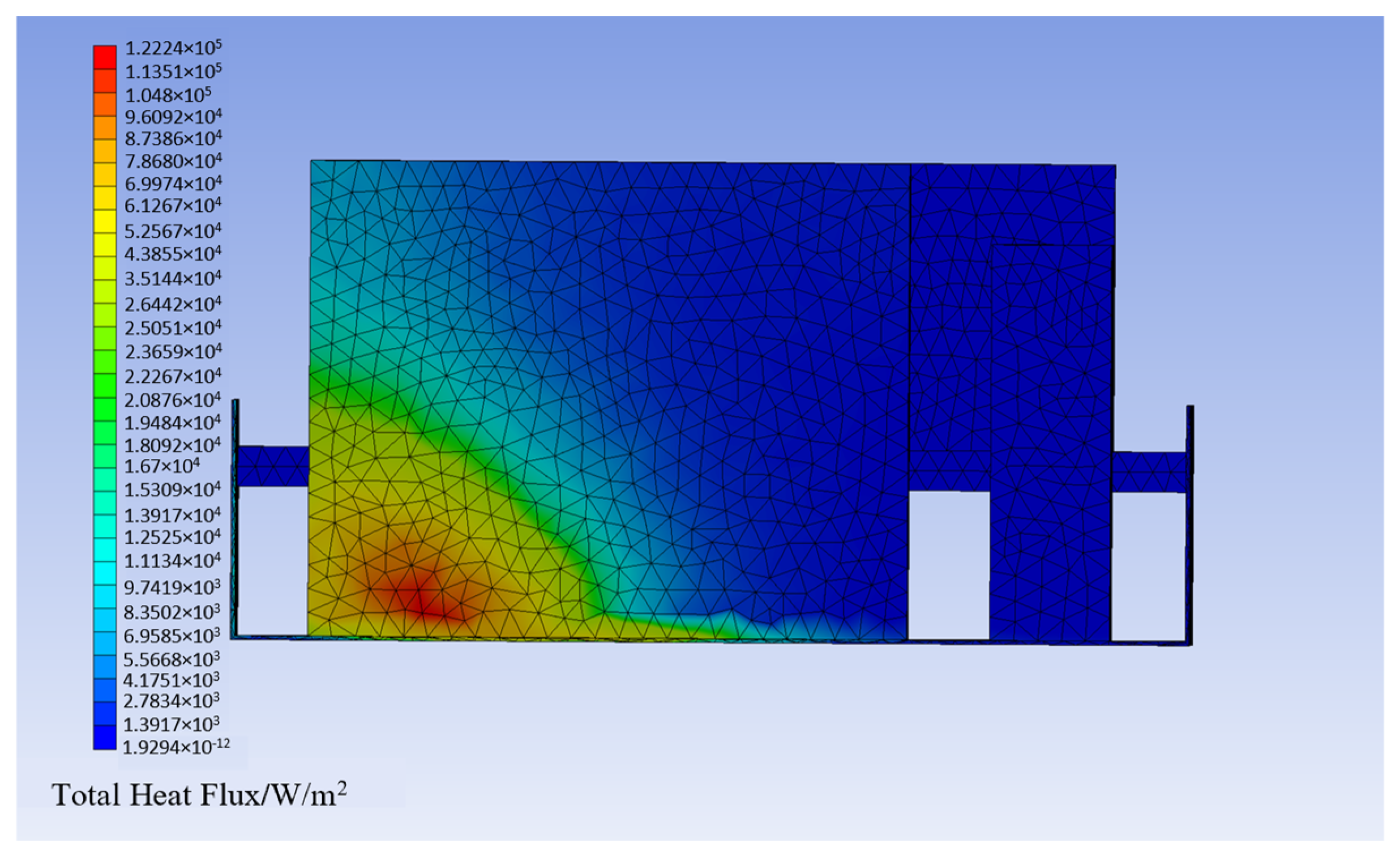
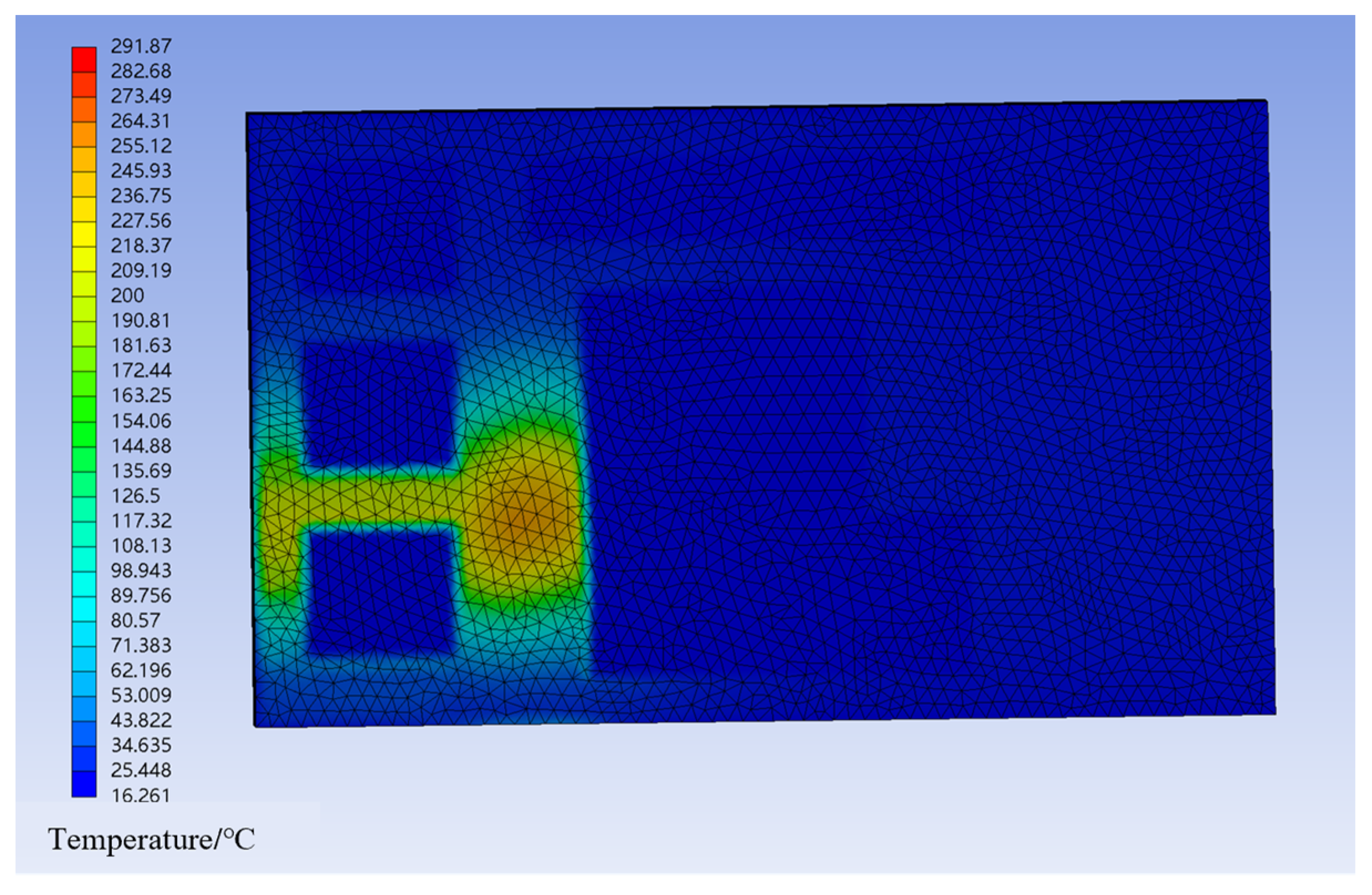



| Parameters | Values |
|---|---|
| 98.5 °C | |
| 44.6 kJ/g | |
| 683.8.0 kg/m3 | |
| Specific heat | 2.33 kJ/kg∙°C |
| Thermal conductivity | 0.14 W/m∙K |
| Structural Steel Parameters | Values |
|---|---|
| Combustion heat | 44.7 kJ/g |
| Density | 7860 kg/m3 |
| Specific heat capacity Coefficient of thermal expansion | |
| Thermal conductivity | 0.143 W/m∙K |
Disclaimer/Publisher’s Note: The statements, opinions and data contained in all publications are solely those of the individual author(s) and contributor(s) and not of MDPI and/or the editor(s). MDPI and/or the editor(s) disclaim responsibility for any injury to people or property resulting from any ideas, methods, instructions or products referred to in the content. |
© 2024 by the authors. Licensee MDPI, Basel, Switzerland. This article is an open access article distributed under the terms and conditions of the Creative Commons Attribution (CC BY) license (https://creativecommons.org/licenses/by/4.0/).
Share and Cite
Zhao, Y.; Miao, Z.; Wang, S.; Ai, D. Numerical Simulation Study on the Response of Ship Engine Room Structure Under Fire Based on Thermo-Mechanical Coupling Model. Fire 2024, 7, 480. https://doi.org/10.3390/fire7120480
Zhao Y, Miao Z, Wang S, Ai D. Numerical Simulation Study on the Response of Ship Engine Room Structure Under Fire Based on Thermo-Mechanical Coupling Model. Fire. 2024; 7(12):480. https://doi.org/10.3390/fire7120480
Chicago/Turabian StyleZhao, Yuechao, Zeya Miao, Shouye Wang, and Dihao Ai. 2024. "Numerical Simulation Study on the Response of Ship Engine Room Structure Under Fire Based on Thermo-Mechanical Coupling Model" Fire 7, no. 12: 480. https://doi.org/10.3390/fire7120480
APA StyleZhao, Y., Miao, Z., Wang, S., & Ai, D. (2024). Numerical Simulation Study on the Response of Ship Engine Room Structure Under Fire Based on Thermo-Mechanical Coupling Model. Fire, 7(12), 480. https://doi.org/10.3390/fire7120480






